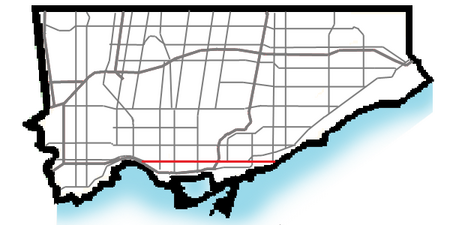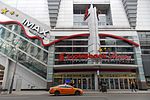Queen Street (Toronto)
AC with 0 elementsHipster neighborhoodsInfobox road instances in OntarioInfobox road maps tracking categoryNeighbourhoods in Toronto ... and 3 more
Roads in TorontoShopping districts and streets in CanadaUse mdy dates from April 2019

Queen Street is a major east-west thoroughfare in Toronto, Ontario, Canada. It extends from Roncesvalles Avenue and King Street in the west to Victoria Park Avenue in the east. Queen Street was the cartographic baseline for the original east-west avenues of Toronto's and York County's grid pattern of major roads. The western section of Queen (sometimes simply referred to as "Queen West") is a centre for Canadian broadcasting, music, fashion, performance, and the visual arts. Over the past twenty-five years, Queen West has become an international arts centre and a tourist attraction in Toronto.
Excerpt from the Wikipedia article Queen Street (Toronto) (License: CC BY-SA 3.0, Authors, Images).Queen Street (Toronto)
Queen Street West, Toronto
Geographical coordinates (GPS) Address Nearby Places Show on map
Geographical coordinates (GPS)
| Latitude | Longitude |
|---|---|
| N 43.649584 ° | E -79.39241 ° |
Address
Queen Street West 274
M5V 2A4 Toronto
Ontario, Canada
Open on Google Maps






